Mastering Foiling Wakeboard Techniques and Gear
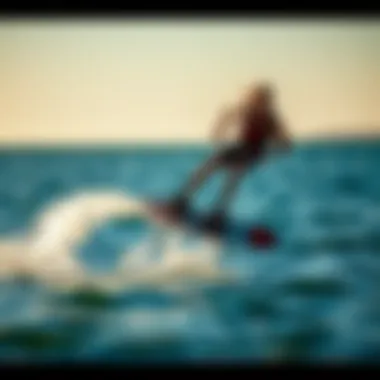
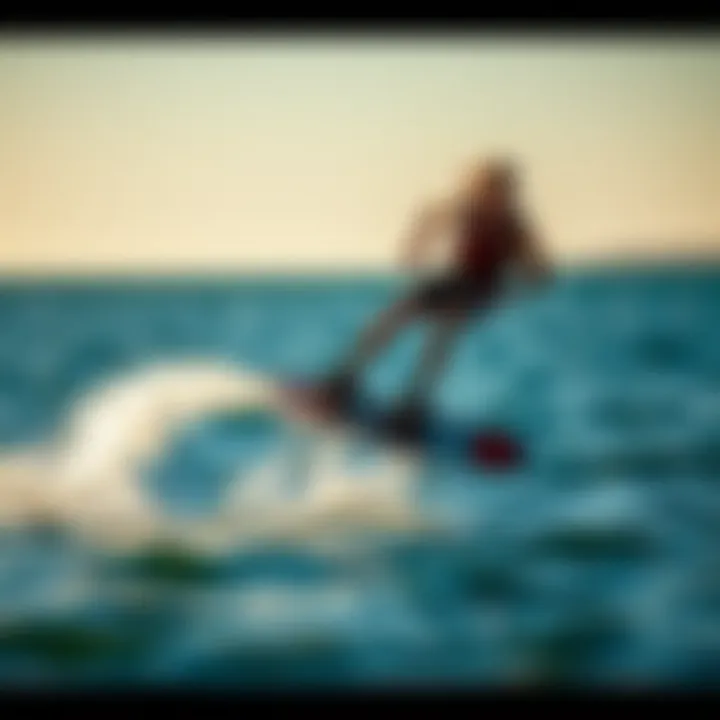
Intro
Foiling wakeboarding, an exciting fusion of traditional wakeboarding and hydrofoiling, has gained traction in the watersports community. This discipline offers a chance to glide above the water, creating a sensation that feels almost surreal. For those looking to embrace this cutting-edge sport, understanding the essentials can be a game changer.
As beginner or seasoned wakeboarders seek to enhance their skills, delving into the varied techniques, equipment, and safety practices will undoubtedly elevate their experience. The aim of this article is to break down these components in a way that resonates with those who cherish the thrill of being on the water. Let's dive headfirst into the essentials, starting with gear insights that are critical for those looking to take their foiling adventures to new heights!
Gear Insights
When it comes to foiling wakeboarding, having the right gear is indispensable. The board and foil, bindings, and safety equipment all play a significant role in shaping your performance and experience. Let’s take a closer look at what you need to get started and what seasoned riders might consider as upgrades.
Latest Gear Reviews
- Liquid Force Rocket Foil Board
This board has made waves in the community for its stability and ease of use. The design enhances buoyancy, allowing even novices to find their footing quickly. Its lightweight material contributes to the board's responsiveness. - Slingshot Ghost 2021 Foil
Designed with advanced technology, the Ghost offers exceptional lift at low speeds. Riders have praised its ability to tackle both flat water and waves with impressive control. - Naish Jet Foil
This piece of equipment boasts a sleek design, promising efficiency and maneuverability. It’s suitable for various skill levels, allowing riders to push their limits safely.
Essential Gear for Beginners
For those just beginning, it can be overwhelming to choose from the vast number of options available. Here’s a simple checklist for the basic gear you will need:
- Foil Board
Opt for a beginner-friendly board that provides ample stability while you’re learning to coast above the waves. - Bindings
Adjustable bindings ensure comfort and security, allowing for flexible foot placements as you develop your technique. - Safety Equipment
Always use a life jacket designed for watersports. A helmet is also recommended to protect your head against potential falls. - Tow Rope
A reliable tow rope with a comfortable handle will make your initial tows smooth and enjoyable.
Investing in quality gear not only nurtures progress but also boosts confidence on the water. As the saying goes, you have to have the right tools to get the job done right. So, before diving into techniques, ensure your gear is in check.
Techniques and Tips
The thrill of foiling is magnified by mastering the techniques involved. From getting up on the board to executing tricks, a focused approach can elevate your ride immensely.
Advanced Tricks and Techniques
Once you’re comfortable with the basics, consider honing skills such as:
- Carving Turns
To maneuver smoothly, practice edging into turns. This involves shifting your weight and using your hips to control the board’s movement. - Jumping
Start with small jumps; timing is key. Upshift when you reach the peak of a wave to gain altitude before coming back down gracefully. - Foil Pumping
This technique uses your body's momentum to glide above the water continuously. While tricky, it's an impressive skill that many riders strive to master.
Safety Practices for Kiteboarders
With the growing popularity of foiling, safety cannot be taken lightly. Here are fundamental safety practices:
- Check Conditions
Always be aware of the wind and water conditions before heading out. Avoid overly windy days as they can lead to uncontrolled rides. - Ride Within Your Limits
Understand your capabilities and don’t push yourself too far too quickly. Progress takes time. - Wear Proper Gear
Aside from flotation devices, wearing appropriate attire that protects against weather elements is crucial.
Foiling wakeboarding opens up a realm of exhilaration and adventure. Armed with the right gear and knowledge, you can confidently step into this dynamic world of watersports. As your skills advance, the possibilities are endless, revealing new horizons just waiting for you to explore.
Prolusion to Foiling Wakeboarding
Foiling wakeboarding is increasingly capturing the imagination of riders and water sports enthusiasts. This unique discipline marries innovation and thrill, enticing both veterans and newcomers to the water. The beauty of foiling lies in its ability to lift riders above the surface, providing a sensation akin to flying. While traditional wakeboarding certainly has its charm, foiling introduces an exciting twist, making it an important area of exploration in the world of water sports.
Understanding foiling isn't merely a matter of grasping the technique; it's about appreciating the evolution of water sports as a whole. As enthusiasts seek new challenges, foiling's entry into the arena has unlocked a gateway to endless possibilities, enhancing skill development and offering an enriched water experience. Furthermore, as the popularity of the sport grows, so does the community surrounding it, fostering camaraderie and knowledge exchange among participants. This aspect is particularly appealing to adventurous souls eager to delve into watersports beyond the usual themes of surfing and wakeboarding.
Understanding Foiling
Foiling involves a specialized board attached to a hydrofoil, which is essentially a wing-like structure submerged under the water. When in motion, the foils generate lift, raising the board—and rider—above the surface. This diminishes drag, resulting in a smoother ride at higher speeds and under a wider range of conditions. This change fundamentally alters the dynamics of wakeboarding, with riders experiencing reduced resistance, less turbulence from the water’s surface, and increased freedom to carve and maneuver. The thrill of soaring above the waves, even in choppy conditions, is part of what makes foiling such a captivating practice.
History of Foiling Wakeboarding
The origins of foiling wakeboarding trace back to an inventive push that began with windsurfing. While hydrofoils had been used in the windsurfing community since the 1980s, it wasn't until the late 2010s that foiling started to receive proper recognition in the wakeboarding domain. As manufacturers began producing boards specifically designed for foiling, the sport attracted attention.
Various rider experiments and passionate enthusiasts contributed significantly to its evolution, introducing numerous modifications, especially concerning the shape and design of foils. Influencers from both the wakeboarding and surfing communities began bridging the gap, sharing their experiences and techniques, creating a ripple effect of growth in popularity.
Now, foiling wakeboarding stands as a vibrant subculture within the water sports community. Thrilling competitions and events dedicated to foiling have emerged, showcasing the skill and creativity within this niche sport. As the world moves forward, foiling is set to flourish further, captivating those who treasure the waters and seek new heights in their riding journey.
The Mechanics of Foiling
Understanding the mechanics of foiling is crucial for anyone looking to elevate their foiling wakeboarding experience. This aspect delves deep into how the different components of foils interact with water and air to create that exhilarating lift that makes this sport so distinct. The design and functioning of foils not only contribute to one’s performance but also significantly affect safety and enjoyment on the water. This section aims to break down the intricate details of foils to ensure that both newbies and veterans grasp the essential concepts.
How Foils Work
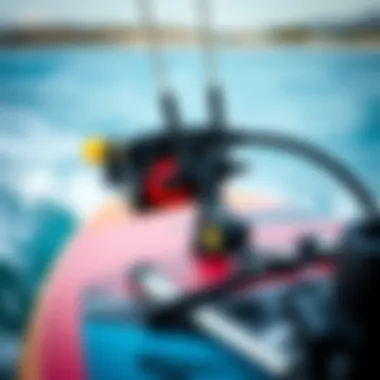
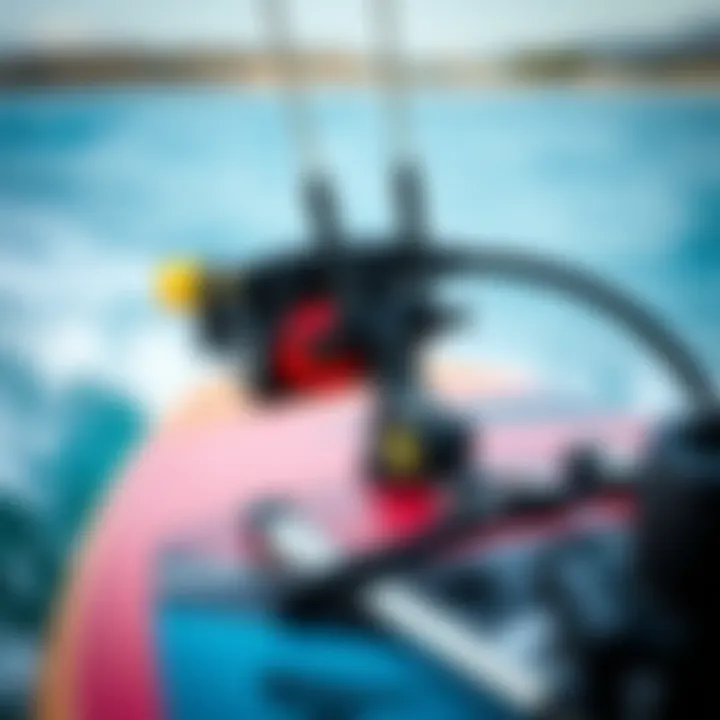
At the heart of foiling wakeboarding lies the ingenious principle of hydrodynamics. When a wakeboarder moves over the water, the foil beneath generates lift by manipulating the water flow. This is achieved through its uniquely shaped wings that differ from traditional wakeboard fins. As the rider gains speed, the foil’s lift increases, allowing the board to rise above the surface of the water, reducing drag and enabling smoother sailing even in choppy conditions.
An essential factor to grasp is the angle of attack, which refers to how the foil meets the water surface. A proper angle allows the foil to slice through the water effectively, providing the necessary lift. Riders often need to adjust their stance and weight distribution to optimize their performance, enhancing the experience further.
Types of Foils
Understanding the different types of foils can greatly impact a rider's skill and preferences. Each type boasts unique characteristics that contribute to various riding styles, skill levels, and conditions.
Front Foil
The Front Foil primarily determines the lift and overall stability of the ride. It serves as the first point of contact with the water, making its design crucial. Typically, it has a larger surface area compared to the back foil, resulting in more lift at lower speeds. Many riders appreciate this feature because it simplifies the learning curve, allowing novices to experience the joy of foiling sooner.
Its unique design also allows for better control when carving and maneuvering. However, it can make the ride feel less responsive at higher speeds, as its larger wing can create excess drag. Many advanced riders may opt for a smaller front foil for faster speeds.
Rear Foil
The Rear Foil, while often less talked about, plays a critical role in a rider's overall balance and steering. Unlike the front, it is generally smaller and more agile, providing fine-tuning to the board’s responsiveness. Riders can control their speed and turns more precisely when using a rear foil that suits their style.
The key characteristic of the rear foil is its ability to enhance performance as the rider becomes more experienced. As one progresses, balancing the front and rear foils allows the rider to explore more advanced maneuvers.
However, a downside to the rear foil can be its sensitivity; poor placement or a mismatch with the front foil might lead to instability.
Stabilizers
Stabilizers serve a supportive role in the foiling setup, acting to create equilibrium across the board. These smaller wings are attached at the back of the foil system, working to ensure stability, especially for new riders who are still finding their footing. They can minimize the chances of tipping over by providing extra lift in the back, allowing riders to feel more secure.
Their unique feature enhances the ease of learning as it softens the learning curve by preventing sharp tilting or falling. However, seasoned riders might find them limiting, as they can dampen extreme maneuvers and turns, which are often sought after as one's skills improve.
Essential Equipment for Foiling Wakeboarding
When it comes to foiling wakeboarding, the right equipment can make the difference between a smooth ride and an exhausting struggle on the water. Understanding the essential equipment for foiling wakeboarding is critical for both new adventurers and seasoned riders looking to enhance their experience. Proper equipment goes beyond just being functional; it can significantly improve your performance, safety, and the overall enjoyment of the sport.
Choosing the Right Board
Selecting the perfect board is paramount in your foiling journey. The type of board you choose can influence your agility and stability as you glide above the water. Look for a board that resonates with your skill level and the type of water conditions you plan to tackle.
Here are some considerations:
- Material: Most boards are made from fiberglass or carbon; the latter being lighter and stiffer, it often leads to superior performance.
- Size: Larger boards provide more stability, ideal for beginners, whereas smaller boards are suited for advanced riders who want quicker turns and higher speeds.
- Shape: A board's design can dictate how it performs on various waves and the ease of take-offs. Curved shapes offer more maneuverability.
Remember, trying out multiple boards can help you find the one that feels right under your feet, allowing you to ride more confidently.
Selecting the Proper Foil
The foil itself is quite a few cuts above your standard wakeboard setup. The role of the foil is crucial; it lifts you above the water using a hydrofoil design. When picking a foil, consider the following:
- Aspect Ratio: A higher aspect ratio foil means more speed and less drag, perfect for experienced riders. Beginners might want a lower aspect ratio for easier control.
- Surface Area: Bigger surfaces provide more lift, particularly beneficial for those just starting out or riding in choppy waters.
- Construction: Material matters here too. Carbon foils are known for their lightweight and durability, while aluminum is often a budget-friendly option.
Trying to select the right foil can be quite an endeavor, but it’s worth it to ensure your ride is sensational rather than simply satisfactory.
Safety Gear Requirements
Safety should never be an afterthought, especially when engaging in an exhilarating sport like foiling wakeboarding. Here’s what you should consider wearing:
- Life Jacket: Ensure that you choose a Coast Guard-approved life vest. Opt for one that's snug but not restrictive to allow for mobility.
- Helmets: A well-fitted helmet can prevent head injuries. It's not just for show; it’s vital for protection.
- Impact Vest: These provide added safety against falls, which are common in the sport.
- Footwear: While some riders prefer bare feet, others may opt for water shoes or specialized wakeboard boots for more grip.
It's crucial to assess the risks and gear up accordingly, giving you peace of mind as you enjoy the thrill of foiling. After all, it’s always better to be over-prepared than under-prepared when you’re out on the water.
Embrace your adventure, but safety should never be compromised. A well-prepared rider is a happy rider.
In summary, making informed choices in your equipment selection—be it boards, foils, or safety gear—will not only enhance your performance but will also contribute to a safer experience in the world of foiling wakeboarding.
Techniques for Successful Foiling
Foiling wakeboarding isn’t just about gliding over the water; it’s a complex ballet of technique and timing. Understanding the right methods can drastically elevate not just your performance but also the enjoyment you derive from the sport. Mastering the techniques in this section provides the foundation for both safety and success, allowing you to navigate the nuances that come with foiling in diverse conditions.
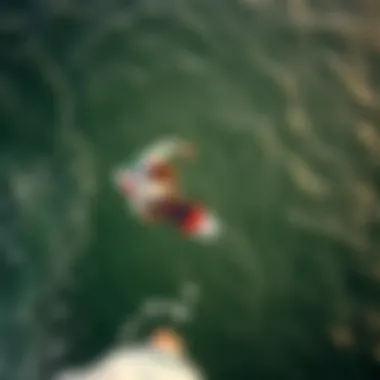
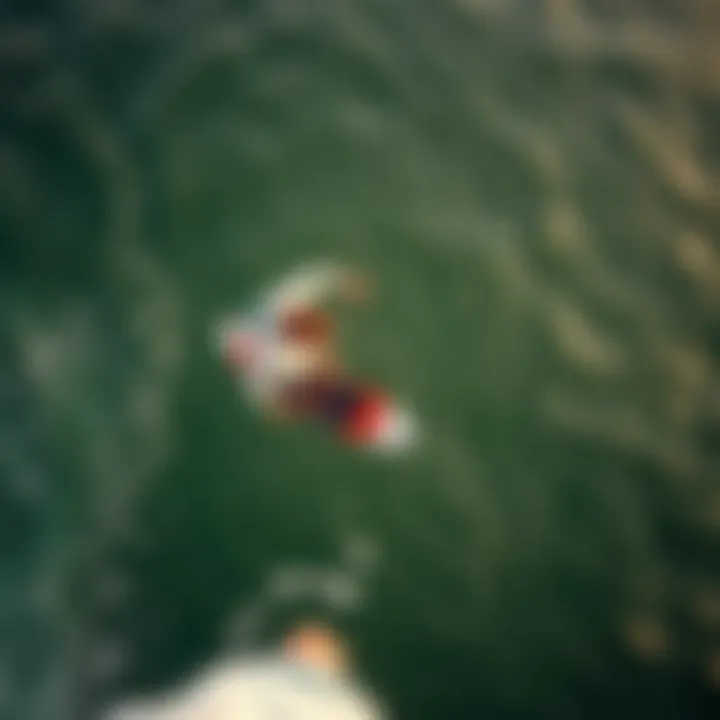
Getting Started
Before diving headfirst into the world of foiling wakeboarding, it’s crucial to get a grip on the essentials. The very first step involves familiarizing yourself with your gear. Choose the right board that suits your size and skill level. Generally, beginners might lean towards a wider board that provides more stability.
Practice standing on the board while it's on dry land. This might seem trivial, but it helps in understanding balance. A good stunt to try is practicing the ‘Plank Pose’—standing firmly with legs shoulder-width, maintaining a straight posture. This helps in balancing yourself once you hit the water.
When you finally hit the water, begin by kneeling on the board. A slow start keeps you grounded and prevents wiping out. Once you're comfortable, shift your weight towards your feet, maintaining a low center of gravity. This way, you can gradually find your footing before attempting to stand completely.
Advanced Riding Techniques
Once you're comfortable with the basics of foiling, diving into advanced riding techniques becomes a thrilling experience. Understanding how to ride the foil in different conditions is essential—this means learning to sense water currents and adjusting your riding style accordingly.
For instance, practice shifting your weight during turns. Leaning into the turn will allow the board to carve seamlessly. Balancing the foil requires subtle shifts; too much weight on one side can cause it to breach the surface.
Another advanced technique is learning to ride powered-up. This requires generating speed while maintaining control of the foil. It involves a blend of paddling and pumping, where you use the foil’s lift to glide above the water, effectively reducing drag. The ultimate goal is to reach a state where you are merely gliding, feeling almost weightless on the water’s surface.
Foiling Tricks and Maneuvers
As you grow in confidence and skill, the fun really begins. Foiling opens up a world of tricks and maneuvers that will wow your friends and elevate your game. Tricks like the ‘Foil 180’ or ‘Kickflip’ add layers of excitement to your riding experience.
To perform a basic Foil 180, focus on your posture. With a stable base, you can pivot your board while maintaining a balanced stance. Make sure your eyes are set on your landing spot. This visual focus will help you gauge timing and distance.
When attempting advanced tricks, breaking them down into smaller components can simplify the learning process. For example, mastering the proper pop for a jump involves practicing on flat water first and then transitioning to more dynamic conditions.
"Success in foiling isn’t just about speed; it’s about rhythm and patience. Every little movement has its rhythm, and knowing when to play it right is crucial."
Stay connected with the foiling community to learn new tricks and share experiences. Resources such as forums on Reddit or dedicated Facebook groups can be treasure troves of information, helping you stay updated on techniques and trends.
In sum, mastering foiling wakeboarding techniques is a journey filled with learning and growth. From beginner stance to advanced maneuvers, each step is essential in your path to riding the foil like a pro.
Safety Considerations in Foiling Wakeboarding
Foiling wakeboarding is not only an exhilarating sport but also one that comes with its own set of unique safety challenges. Understanding how to navigate these challenges is crucial for both newcomers and experienced riders. This section aims to provide a deep dive into the essential aspects of safety — understanding the risks involved, adopting best practices, and knowing the emergency procedures should an unfortunate situation arise. By prioritizing safety, enthusiasts can enjoy the thrill of foiling without unnecessary fears.
Understanding Risks
Every sport has its risks, and foiling wakeboarding is no exception. Riding high above the water on a foil presents distinct hazards. The primary risks include falling and colliding with the board or the water. When a rider loses balance, the potential for injury increases significantly, especially if they hit the water at an awkward angle. Also, advanced maneuvers can go wrong, leading to unexpected falls or collisions.
Furthermore, environmental factors also play a significant role in safety. Strong currents, waves, and weather changes can affect riding conditions drastically. A seemingly calm day can take a turn, leading to unexpected challenges. Always check water conditions before setting out, and keep updates on local weather — being caught out in less-than-favorable conditions is an accident waiting to happen.
"Safety isn't just a guideline; it's the cornerstone of every exhilarating ride on the water.”
Best Safety Practices
Adopting sound safety practices can mitigate many risks associated with foiling wakeboarding. It starts with wearing the right gear. A well-fitting life jacket is a must; it not only keeps you afloat but can also provide cushioning during falls. Other gear like helmets should not be overlooked, especially when attempting tricks or riding in busy waters.
Here are some best practices to consider:
- Check Equipment Regularly: Ensure that your board and foil are in good condition. Inspect the foil for any damage and ensure that it’s properly mounted.
- Use Quick Release Mechanism: If your setup supports it, use a quick-release binding system. This allows you to detach fast if you fall, reducing the risk of injury.
- Riding with a Buddy: It’s always safer to have someone with you. They can help in emergencies and provide assistance when you’re learning.
- Set Clear Signals: Agree on hand signals or verbal cues with your riding partner to communicate effectively while on the water.
Emergency Procedures
No matter how meticulously you plan your foiling session, accidents can happen. Therefore, it’s vital to know emergency procedures. Being prepared can make a significant difference in how effectively you respond when things go awry.
- Stay Calm: In the event of a fall or equipment failure, keeping a clear head might be your greatest asset.
- Assess Your Surroundings: Check for any nearby obstacles or other water users to avoid collisions while trying to get back on your board.
- Call for Help if Necessary: If you’re injured or in trouble, signal for assistance immediately. If you are with someone, they should be aware of your location and condition.
- Remove the Foil: If you’re incapacitated, you should prioritize detaching from the foil in order to avoid being dragged or injured by it.
- Learn CPR: Have basic first aid skills and know CPR; these can be invaluable in emergency scenarios.
By being aware of the risks, adhering to best safety practices, and preparing for emergencies, foiling wakeboarders can navigate their sessions with confidence. Safety ensures you can focus on the thrill of gliding across the water while minimizing the risks involved.
Location Choices for Foiling
Choosing the right location for foiling wakeboarding can enhance not only your experience but also your skill development. The waterways you select have a significant impact on how you interact with the foil and, ultimately, how you perform. The landscape, water conditions, and accessibility all weigh in on your decision. It’s essential to find spots that cater to both your skill level and the type of foiling you wish to experience.
Top Spots for Foiling Wakeboarding
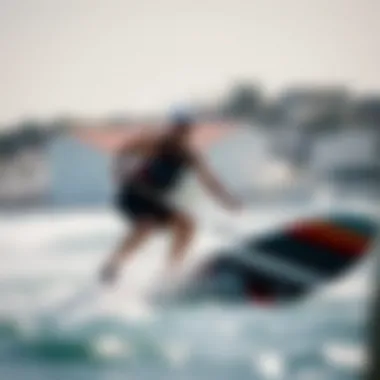
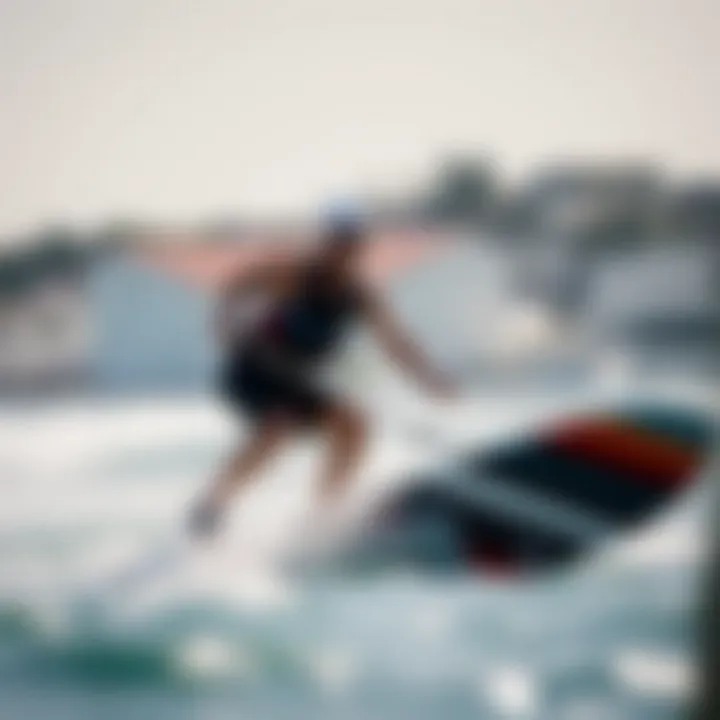
Finding the premier locations for foiling wakeboarding is like searching for a hidden gem. Some spots shine like stars in the vast ocean, while others fade into the background. Here are three standout locations that are known for their optimal foiling conditions:
- Lake Michigan: Amidst the scenic views, this lake offers flat-water sections that make perfect conditions for both beginners and advanced riders. On a calm day, you can glide effortlessly, improving your technique with each run.
- Florida Keys: The turquoise waters are not just beautiful; they provide consistent wind and gentle waves, making it a playground for kite and foil enthusiasts alike. The weather often cooperates here, which means more riding time.
- Maui, Hawaii: Known for its stunning landscapes, Maui also has perfect wind and swell conditions. Foiling here isn’t merely about the sport; it’s a full-fledged experience, combining nature’s wonders with thrilling riding conditions.
Identifying and venturing out to these locations ensures you don’t just ride— you ride in style and comfort.
Local Water Conditions
When it comes to foiling, knowing local water conditions can make or break your day on the water. Each body of water has its quirks influenced by weather patterns, geography, and seasonal changes. Here’s what to consider:
- Wind Patterns: Understanding local wind conditions is crucial. A steady wind can lift your spirits and your foil, while unexpected gusts might leave you battling against the elements. Checking local forecasts can be a game-changer for planning your rides.
- Water Depth: Foiling requires a certain depth of water to be safe and effective. Shallow areas can be hazardous and limit your ability to ride smoothly. Look for routes with substantial depth, especially if you are still mastering your skills.
- Current and Tides: Some areas experience strong currents and tidal fluctuations that can create different riding scenarios. Knowing your water’s behavior at different times of the day can help you time your sessions for the best experience.
In essence, the right location combined with favorable water conditions sets the stage for a fulfilling foiling experience. You get the thrill, the joy, and the tranquility of being on the water, all while honing your skills in an ideal environment.
Maintenance of Foiling Equipment
Taking care of your foiling wakeboard equipment is not just a matter of keeping things shiny; it plays a crucial role in ensuring performance and safety out on the water. Regular maintenance extends the lifespan of your gear and enhances your overall experience. With every ride, wear and tear is inescapable, but proper upkeep can mitigate potential issues. From preventative measures to timely repairs, understanding the nuances of foiling equipment maintenance can make all the difference.
Routine Care for Boards
Your board is more than just a platform—it's your gateway to adrenaline-fueled adventures. Keeping it in top shape might seem daunting, but it boils down to a few key practices.
- Rinsing After Each Use: Water can do a number on the board, especially if you've been in saltwater. Rinse it off right after your session to remove any salt, sand, or debris that may have settled on its surface. It only takes a few minutes but can save significant headaches down the road.
- Inspecting for Damage: Regularly look over your board for scrapes, cracks, or any signs of damage. A small dent may lead to bigger issues if neglected. It’s always better to be safe than sorry, so take a close look after each ride.
- Check Fins and Mounts: Ensure the fins are securely attached and not cracked. Loose fins can affect your ride quality and increase the risk of accidents. If it ain’t tight, it ain’t right—and that holds true for your mounts too.
- Waxes and Lizards: Applying a quality wax can help with glide and keeping your grip in check. Follow up with a buff to make it last longer. For active foilers, consider adding traction pads for better grip.
- Storage Rights: When you’re not out riding, store your board in a cool, dry place. Avoid leaving it out in the sun—excessive heat can warp the materials over time.
By following these simple steps, you’ll keep your board performing at its best while enjoying peace of mind knowing you're prepared for your next adventure.
Foil Maintenance Tips
Just like the board, your foil needs love too. Understanding how to maintain it properly can significantly boost your performance while minimizing risks.
- Clean Regularly: Just like the board, clean your foil after each use. Pay special attention to the fuselage and wings. Not only does this prevent corrosion, but it also keeps speeds optimal.
- Inspect for Corrosion: If you're riding in salty water, be vigilant about checking for corroded spots. A small patch can quickly spread if left unmanaged.
- Tighten Bolts: The connections between your foil’s parts should be secure and intact. They experience stress during use, so check and tighten bolts as needed. Loose connections can lead to catastrophic failures when hitting waves.
- Avoid Hard Impacts: When taking off or landing, make your approach as gentle as possible to avoid major shifts in the foil’s integrity.
- Long-term Care: Consider dismantling the foil for deeper cleaning after several uses. This ensures that all parts are free from debris and properly maintained.
Take the time to nurture your foiling gear, and it will reward you with enhanced riding experiences and fewer headaches along the way. It’s all about establishing a routine where care becomes second nature. After all, a well-maintained set of equipment doesn’t just keep you safe; it also elevates your enjoyment of this exciting water sport.
"The successful rider knows that behind every thrilling wave is a sufficiently tuned board and foil."
For more information and comprehensive guidelines on water sports equipment, visit Wikipedia or check out resources on Reddit.
Make sure to always stay informed and connected with fellow enthusiasts.
Community and Culture of Foiling Wakeboarding
The world of foiling wakeboarding is not just about the thrill of gliding over the water; it's also a rich tapestry woven together by community and shared experiences. This culture plays a vital role in elevating the sport, shaping its growth, and fostering its future. When you dive into this vibrant community, you'll find that it's built on camaraderie, shared knowledge, and a passion that transcends mere participation.
The Foiling Wakeboarding Community
The foiling wakeboarding community is an eclectic mix of enthusiasts, from fresh-faced beginners to seasoned pros sharing tips about gear selection or ideal locales for foiling. This community thrives on collaboration and support. Local meet-ups, competitions, and online forums are all avenues where individuals can connect, swap stories, and learn from one another. Often, newbies find a mentor eager to help them avoid common pitfalls as they learn the ropes.
People within the sporting world often refer to it as having "your tribe." In this case, it's an appreciation of nature, the art of foiling, and the shared joy of riding. Whether you’re improving your skills or seeking the best spots to hit the water, finding your group is crucial. Engaging with this community can turn a solitary pursuit into a fulfilling journey filled with friendships and memorable moments.
Impact of Social Media
Social media has changed the game in numerous ways. Platforms like Instagram and TikTok burst with jaw-dropping footage of foiling adventures, inspiring countless individuals to pick up the sport. Not only do these platforms showcase stunning visuals, but they also foster a sense of inclusivity, allowing countless enthusiasts to join in.
Key Benefits of Social Media in Foiling:
- Connection: People around the world can share experiences, advice, and even collaborate on projects or events.
- Information Sharing: Tips on gear, riding techniques, and review of products flow freely, allowing everyone to learn from one another without barriers.
- Awareness and Growth: As more eye-catching videos circulate, interest in foiling wakeboarding can only grow, potentially attracting new participants and supporters.
Social media acts as a megaphone for the small whispers of the community, amplifying voices and talents that may otherwise go unnoticed. New riders often feel encouraged to step out of their comfort zones and try something new, knowing that support is just a shout away on their social feeds.
"Community isn't just about proximity, it's about connection. In foiling wakeboarding, that connection makes all the difference."
Future Trends in Foiling Wakeboarding
The world of foiling wakeboarding is constantly shifting, with new waves of innovation and growth on the horizon. Embracing these future trends not only enhances the sport but also opens doors for enthusiasts, making it more accessible and enticing for newcomers. Understanding the potential trajectory of foiling wakeboarding can help riders make informed choices about their gear and practices, ensuring they remain at the forefront of this exhilarating activity.
Technological Innovations
In the realm of foiling wakeboarding, technology plays a pivotal role in shaping how the sport is experienced. From advanced material compositions to smart designs, the advancements in equipment can lead to significant improvements in performance and safety. For instance, foils made from lighter, yet sturdier materials such as carbon fiber are becoming more common, providing riders with increased lift and stability.
Here are a few noteworthy trends in technology that are making waves:
- Smart Foiling Systems: Some manufacturers are exploring integration of digital technology into foils. This could mean sensors that provide real-time feedback on performance metrics like angle, speed, and stability, allowing riders to optimize their skills.
- Personalized Gear: Customizable boards and foils tailored to individual preferences are gaining traction. Riders can now tweak their gear for ideal buoyancy and drag, enhancing overall control and comfort.
- Enhanced Safety Features: Innovations include user-friendly features such as automatic release systems in the event of a fall, which minimize injury risk—a growing priority as more weekend warriors join the fray.















